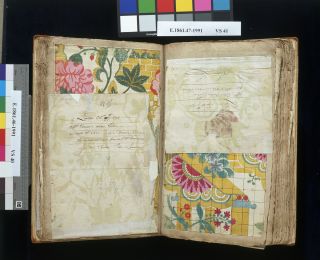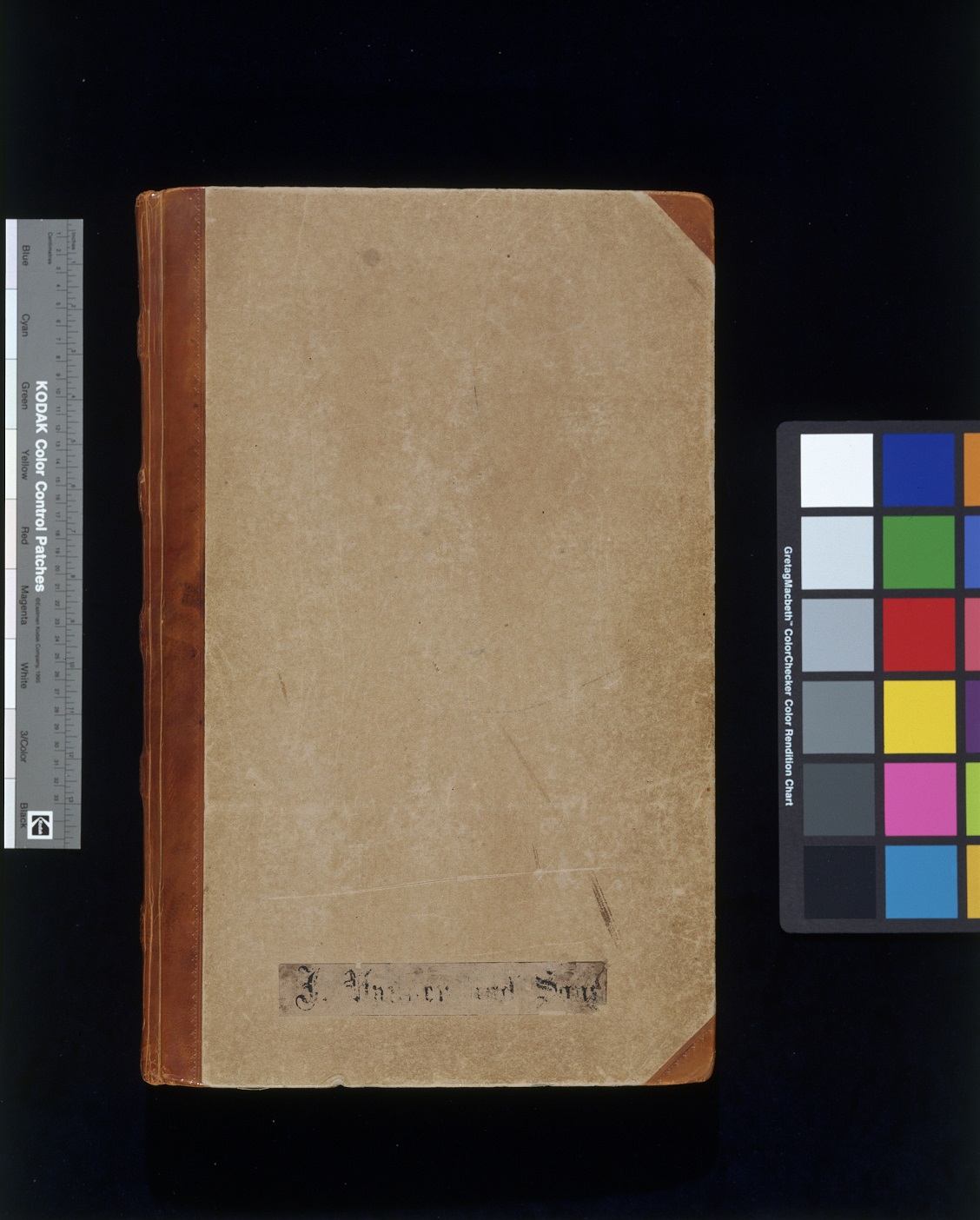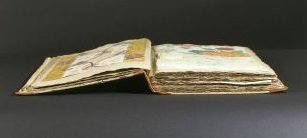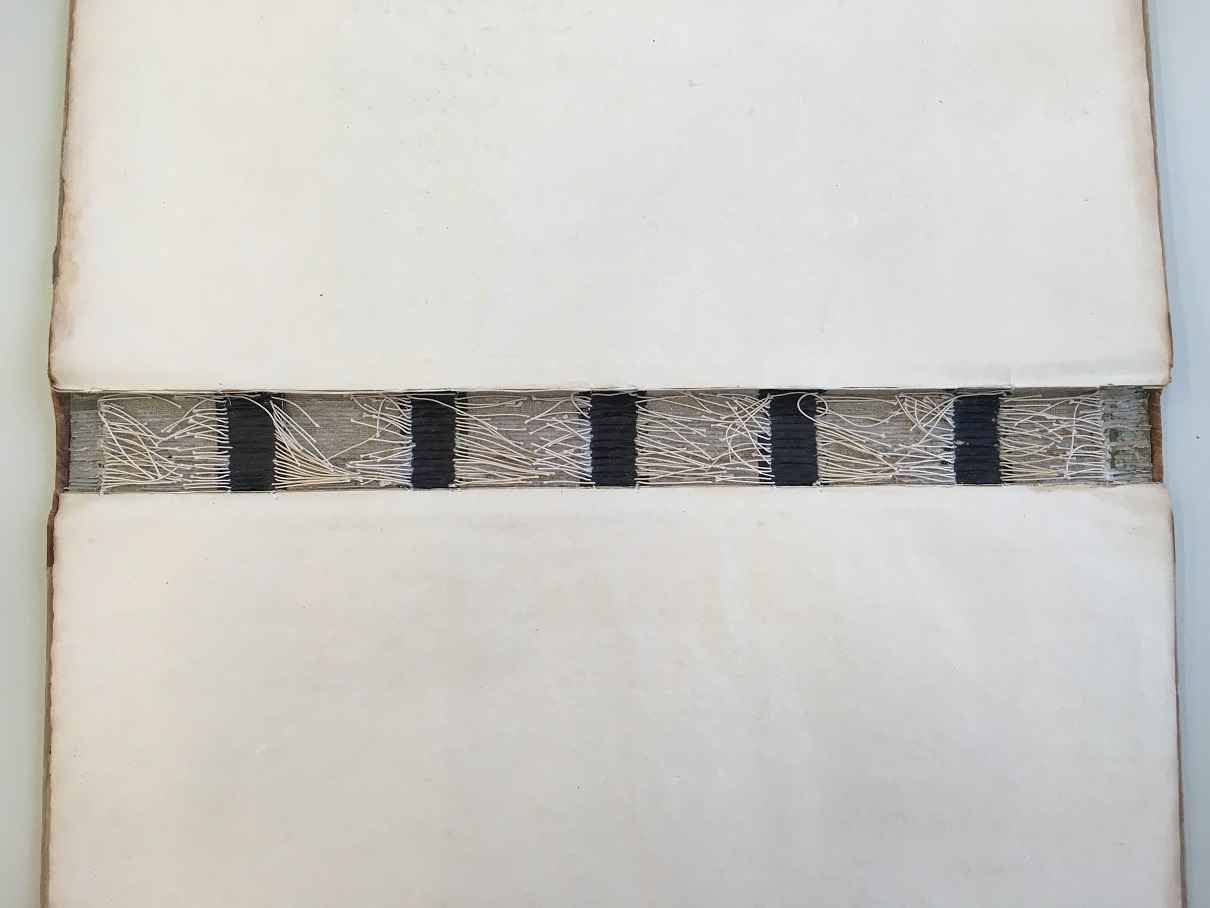Should a preconceived format dictate an outcome?
I have always been a strong advocate of retaining albums in their original format and strongly oppose pulling them (the act of breaking down a bound format to its constituent parts of covers and sections) – after all I don’t want to put myself out of a job and handover work to my paper conservation colleagues!
Historically albums play an important role in our understanding of collecting: the gathering together of loose material in a manner that often informs us of the collector’s intent in a format that protects this vulnerable material from loss or damage. Who hasn’t experienced the delight of opening a scrapbook or album to be amazed by the incredible colours of pigments and dyes that have been protected from over-exposure to light; or the excitement of seeing so many individual items assembled together in one place?
But sometimes we need to take an informed decision to make a change to that format in order to preserve the contents that are, on rare occasions, becoming damaged due to the album structure. This of course raises many ethical issues so the reasons behind a decision to pull a binding or remove material must be weighed up against retaining them.
In 1999 conservators and curatorial staff met to discuss the future of the 97 silk designs by the Spitalfield designer and master weaver James Leman, bound into what is known as the Leman Album. They were vulnerable to damage through handling and therefore it was important to tackle the issue of what to do with them. Merryl Huxtable, Senior Paper Conservator, had assessed the designs and calculated that:
- 54% of the total damage to the designs was linked to the over tight binding and sewing rather than the folded method of storage or brittle media.
- 77 of all the designs both folded and flat were damaged by the overtight binding of the album and being positioned too close to the spine fold.

The binding was not original as evidence showed that the book block had been in an earlier binding – the stock labels having been transferred to the existing one.

The structure of this later binding restricted the opening of the pages resulting in two particular types of damage occurring when turning the pages:
- Creasing over of the design edges at the spine with folded designs being caught by the opposite page when turning the leaf.
- Vertical creasing occurring in the design when unfolded across the arch of the leaf when open.
Both types of damage had caused associated tears and loss of pigment and paper
Damage was also occurring to some leaves due to the compensation/repair guards acting as a cutting edge along the line of flex. These guards comprise a folded length of paper either added to the spine fold to compensate for the swell of the book block caused by the addition of the designs or adhered to the spine fold to support damage along that area.

After much discussion and many meetings it was finally agreed that although the binding itself was in good condition, with sound intact sewing, it would be necessary to pull the album. This was in order to undertake the necessary conservation work to the designs, remove or pare down the guards that were affecting the flow of the leaves and to modify the structure to minimise further damage by providing an enhanced opening that would enable the support leaves to lie flat.
To this end the album was finally pulled in 2002 and so it had remained, untouched due to conflicting priorities, until 2016 when it was chosen as a pilot project for the newly launched V&A Research Institute (VARI).

Previous posts relating to the project have discussed the designs and the analysis of the pigments and dyes but now it is time to turn to the re-binding. The multi-million dollar question is what to do next? Should it be rebound into a structure with improved opening characteristics incorporating interleaving or should the designs be removed from the support pages and treated as individual objects?
Next post I hope to provide information on the history of the binding itself and an update on decisions relating to the rebinding.


